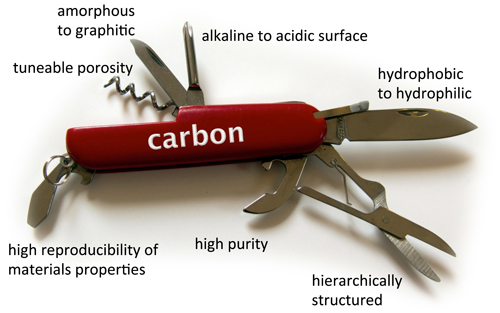Title:Chemical engineering in materials synthesis: New carbon materials for a renewable energy scenario
Speaker:Prof. Bastian J.M. Etzold
Friedrich-Alexander-Universität Erlangen-Nürnberg (FAU)
Time: 14:00pm- 15:30pm, (Mon.) 25, August 2014
Venue: Room 468, Lee Hsun Building
Welcome to attend!
Abstract:
The synthesis of advanced functional materials is a key technology of modern industry. Carbonaceous material is of special fascination as it shows extremely variable material properties. These can be combined for nanomaterials and porous carbons with a huge surface area, allowing further functionalization. Promising applications of carbonaceous materials in chemical industry are the use as support in heterogeneous, electro- or bio-catalysis as also as adsorbent in gas separation and storage. The materials are mainly produced by reactive conversion of carbon containing feedstock and reactive post treatments like oxidations.
Thus, gaining insights into the kinetics and thermodynamics of these reactive synthesis processes allows giving input towards the production of advanced carbonaceous functional materials. This and deducing structure-activity relationships for energy related applications of these materials are the basis of the research in the Etzold lab.
This approach will be presented from the synthesis to the application for carbide-derived carbons (CDC). CDC is produced by the reactive extraction of carbides and feature very high purity, high specific surface area, tuneable pore structure and high reproducibility of the material properties from batch to batch. With this approach and post treatments several material properties can be varied making a unique toolbox available (see Figure 1). A chemical reaction engineering study based on experimental and simulation data will be presented which reveals the kinetics of the synthesis [1-2]. This is basis to give recommendations for the production of these materials [3], and deduce insights for the synthesis of novel core/shell [4] and hierarchal structured materials [5]. Further, deducing structure-activity relationships and results on the application of these materials in the gas separation of N2/CH4/CO2 mixtures, the hydrogenation of thymol, the aqueous phase reforming and electrochemistry will be presented [6-7].

Figure 1: Toolbox of material properties available in the Etzold group.
[1] P. Becker et al. Chem. Eng. J. 159, 236-241 (2010).
[2] T. Knorr et al. Chem. Eng. Sci. 69, 492 - 502 (2012).
[3] Knorr, T. et al. Chem. Eng. Technol. 35, 1495-1503 (2012).
[4] Schmirler et al. Carbon 49, 3679-3686 (2011).
[5] T. Fey et al. Carbon 70, 30-37 (2014).
[6] A. Silvestre-Albero et al. Carbon 59, 221-228 (2013).
[7] A.V. Kirilin et al. Cat. Sci. Technol. 4, 387-401 (2014).



